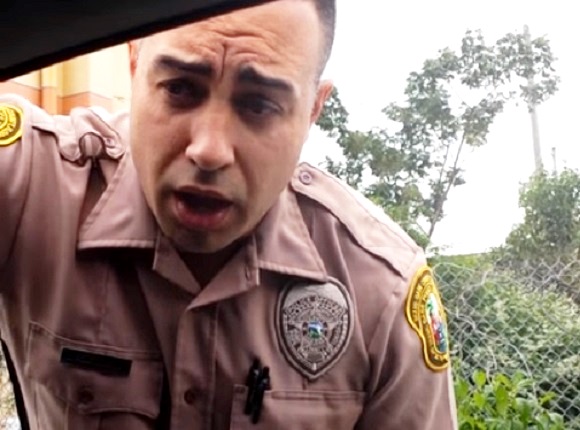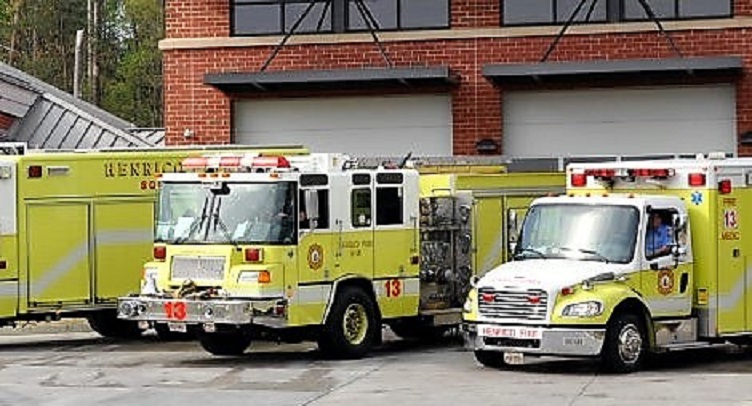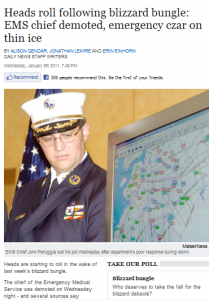News report: DC firefighter injured on malfunctioning ladder truck at training academy
Injury comes as reporter focuses on serious ladder truck & general fleet problems
The tweet (below) a short time ago from reporter Paul Wagner about an injured firefighter is one of at least three stories this week focusing on the serious fleet problems within the DC Fire & EMS Department. It comes just hours after Washington Times reporter Julie Airey filed the second of her stories about aging and failing apparatus in the department, particularly ladder trucks (read Airey’s stories here & here). Wagner has also reported on the department’s apparatus issues, including the lack of working dash-cams.
New-A DC Firefighter was seriously injured at the training academy Thursday–falling nearly three stories–when an aerial ladder on a reserve truck malfunctioned. The FF suffered a broken leg and is still hospitalized. Investigation underway. pic.twitter.com/qQo1lYDzG1
— Paul Wagner (@paulcwagner) November 9, 2018
The fleet problems in DC are something I began covering in the mid 1980s and continued doing so through 2010 when I retired from news. There’s a common thread through all of the stories then and today. While I have no inside information about what’s going on now in the department and am about the furthest thing from an apparatus expert you’ll find, I can easily list the solutions. They’re the same common-sense solutions that have been discussed and mostly ignored since my first reports on this topic. With zero research, this is what I’ve come up with:
- A smart apparatus replacement program that’s always fully funded and never used as a piggy bank for other pet projects or short-term and short-sighted budget savings.
- Make sure that money is well-spent by buying apparatus that best fits the department.
- Finally do something about the decades-long state of apparatus maintenance in the department to include a facility that can handle the load and has certified mechanics, proper apparatus inspection and top-notch management.
- Deal with the high and unnecessary EMS call volume that puts enormous wear and tear on the apparatus.
- A proper driver and apparatus training program for the entire department.
My assessment from reading the latest stories is that you can trace the roots of the current difficulties to decisions made at least a decade ago. If my memory is correct, that’s when the cannibalization of the reserve apparatus fleet began because of occasionally deferred apparatus replacement and continued poor maintenance. The origins are in the administration of Chief Dennis Rubin and Mayor Adrian Fenty, but the problems were made much, much worse with the absolute neglect during the administration of Chief Kenneth Ellerbe and Mayor Vincent Gray (stories here & here). Ellerbe set the tone by having the shop focus from day one–not on apparatus maintenance and replacement–but changing the department seal on all apparatus.
As we know, once the neglect starts, it’s difficult to turn the fleet around without a large infusion of well-spent money and the discipline needed to make the necessary changes. It’s clear that has not occurred and it’s the fault of all involved, to include the mayor, deputy mayor, city council and fire chief.
In just 16 days it will be exactly five years since a detailed outside audit of apparatus, the department’s maintenance operations and fleet management was completed. Read Julie Airey’s initial article and you’ll see that key recommendations from the report continue to be ignored. But you really don’t need to read Airey’s article to reach that conclusion. The state of the apparatus in the fire department that protects the Nation’s Capital tells that story quite well. Shameful.
Julie Airey, The Washington Times:
As a three-alarm fire ripped through a D.C. seniors facility in September, firefighters discovered that the ladders on Trucks 13 and 16 didn’t work and needed to be replaced with a reserve truck.
But there was no reserve, so they were forced to pull a truck — Tower 3 — that was being repaired in the maintenance facility.
Meanwhile, the ladder on Truck 7 became stuck and was in danger of catching fire while 10 firefighters battled the blaze on the roof of the Arthur Capper Senior Public Housing building. Ordinarily, there should be two ladders to allow firefighters to escape from a roof; on that day, there was only one.
Lt. Robert Alvarado watched from the collapsing roof as a firefighter wrestled the ladder away from the flames.
“I’ve never been so scared of going to a fire as I am now,” said Lt. Alvarado, an 18-year veteran of the D.C. Fire and Emergency Medical Services Department, speaking Tuesday during a town hall meeting at the Metropolitan Police Academy at Blue Plains.
Read entire story







